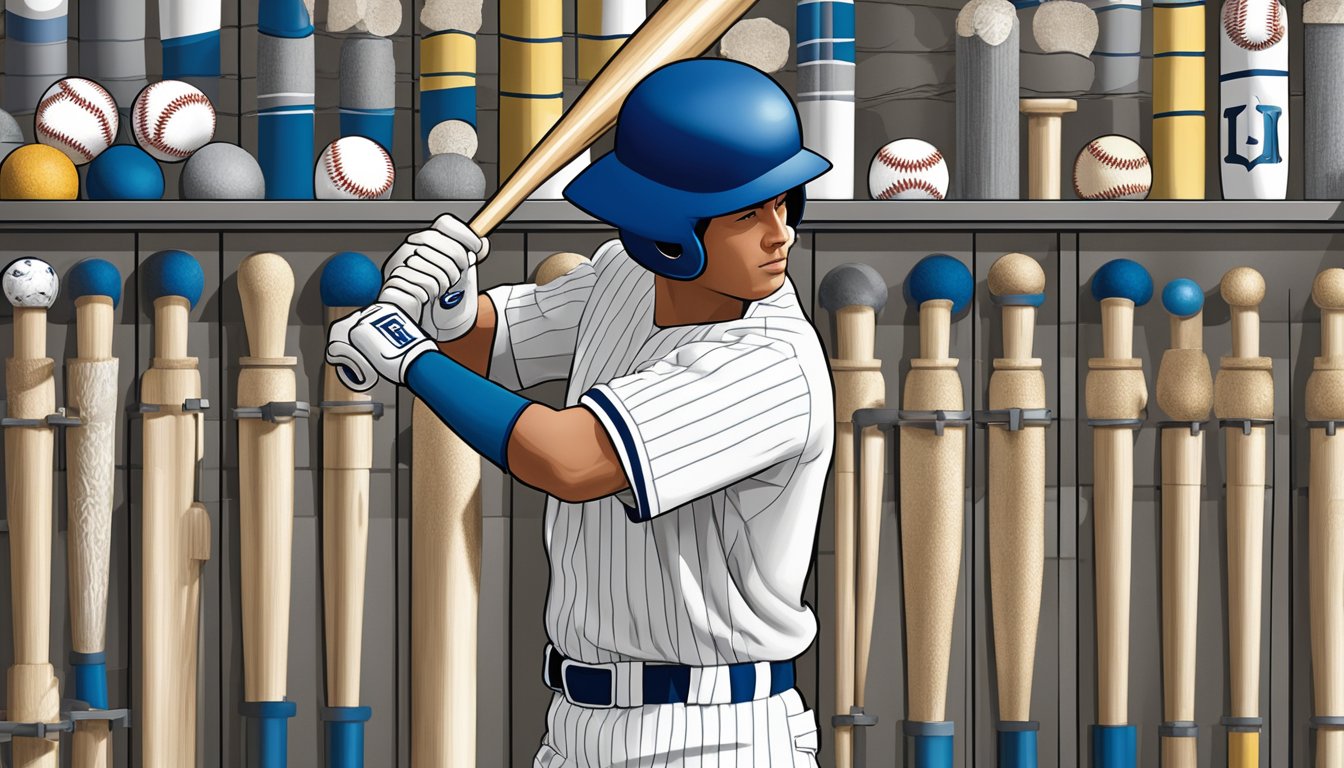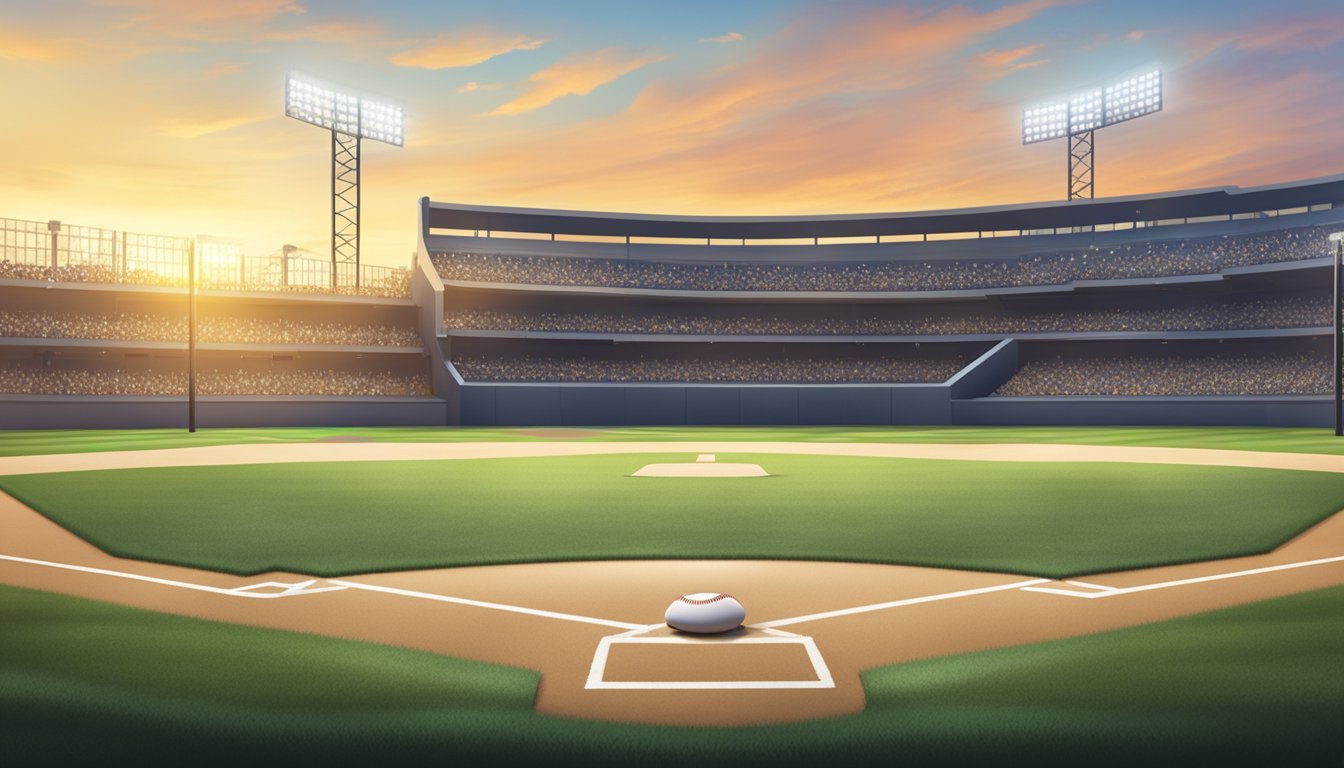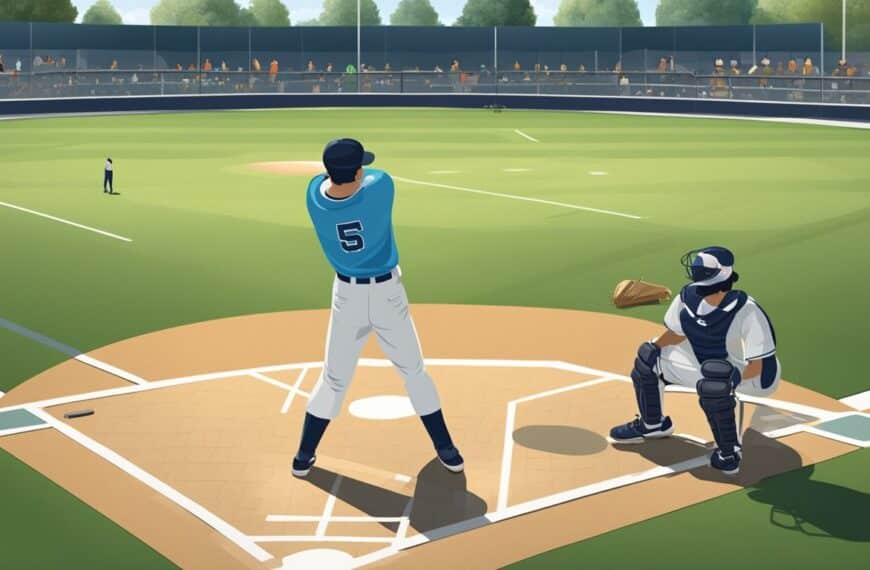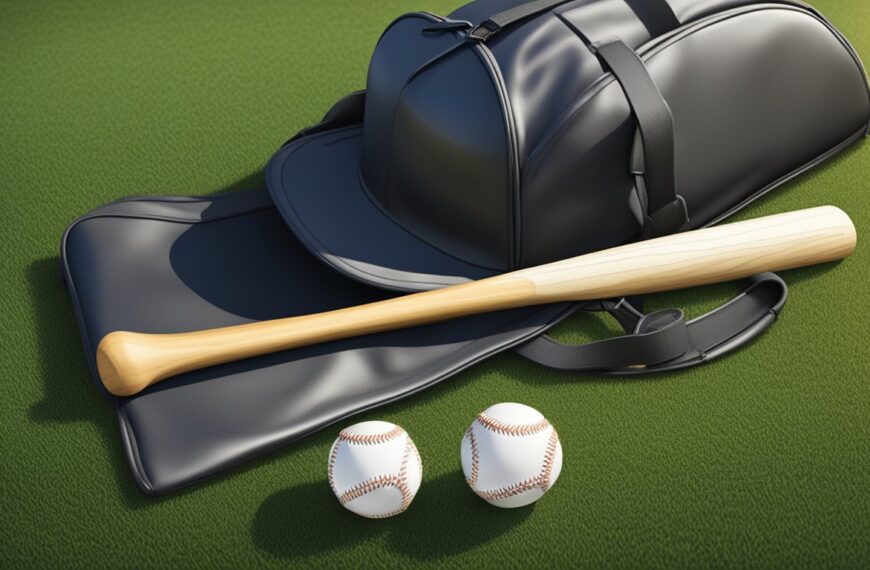Selecting the right batting tee for personal training or professional coaching is essential for any baseball player dedicated to improving their hitting skills. The tee serves as an invaluable tool for both beginners and experienced hitters, allowing them to refine their swing mechanics and develop consistency at the plate. With a variety of batting tees on the market, each boasting different features and benefits, it is crucial to understand what to look for to match a player’s specific needs.
Making an informed decision involves considering aspects like the durability of the tee, its adjustability for different drills, and its portability for practice on the go. In addition, one must evaluate how the tee contributes to a player’s training regimen by enhancing the precision of their swings and accommodating various batting styles. Careful consideration of these factors can lead to a worthwhile investment, which not only aids in skill enhancement but also in the longevity of the equipment.
Key Takeaways
- The right batting tee is fundamental to developing a consistent hitting technique in baseball.
- Consideration of the tee’s features, such as durability and adjustability, is important for tailored training.
- Assessing the value, quality, and compatibility of a batting tee with the player’s goals is key to effective practice.
Understanding Batting Tees
Choosing the right batting tee is crucial for effective baseball or softball training. It’s important to consider the type, components, and materials of the tee to ensure durability and functionality.
Types of Batting Tees
Batting tees come in various designs, each suited to different training levels and needs. The G Tee is a popular choice, known for its adjustability and portability. Another notable type is the Tanner Tee, which includes models like the Tanner Heavy, built for stability. The Flextop design is a patented feature of Tanner Tees, allowing a more realistic feel upon contact by flexing and then returning to its original position.
Key Components of a Batting Tee
The main components of a batting tee include the base, the telescoping tube, and the top, or cup, where the ball rests. The base must provide stability; a heavier base like that on the Tanner Heavy helps prevent tipping. Telescoping tubes should smoothly adjust and stay in place to cater to different hitter heights. The top part of the tee is critical for it dictates the feel of the ball when hit—Tanner’s Flextop makes it stand out for its realistic feedback.
Batting Tee Materials
Batting tees are constructed from a variety of materials:
- Rubber: Affordable and relatively durable, but can lack the sturdiness for intensive use.
- Metal: Often used in high-quality tees like the G Tee, providing durability and weight for stability.
- Plastic: Common in more economical models, light-weight, but not as resilient as metal or rubber.
Each material has its trade-offs, and one should weigh them against their training needs and budget.
Selecting a Batting Tee
https://www.youtube.com/watch?v=ZDzkEfFHn9c&embed=true
Choosing the right batting tee involves evaluating various attributes such as durability, portability, adjustability, and base stability to ensure that it meets specific training needs.
Assessing Durability
A batting tee’s longevity is largely determined by the materials used in its construction. Steel or heavy-duty rubber components are preferable for frequent, rigorous practice sessions, as they are more resistant to wear and tear. A durable tee not only withstands repeated use but also retains its shape and functionality over time.
Considering Portability
When training across multiple locations, a lightweight and foldable design enhances a batting tee’s portability. Features like a carrying handle or travel case also contribute to convenience. Despite being lightweight, the batting tee must maintain enough heft to ensure stability during use.
Adjustability Features
An adjustable batting tee caters to various user heights and hitting zones. Look for tees that offer a broad range of height adjustments, ideally with clear markings for consistency. A tee that easily adjusts is pivotal for accommodating different age groups and skill levels.
Stability and Base Design
The base design is critical to prevent the tee from tipping over during practice. A stable base should have a wide footprint or the option to add additional weights. Some tees feature a weighted base or enable the user to insert weights for enhanced stability, reducing the need for constant repositioning after each hit.
Improving Hitting Skills
https://www.youtube.com/watch?v=SkLvrOJQQHc&embed=true
One’s ability to hit effectively comes down to a combination of proper mechanics, consistent practice, and muscle memory. The following subsections explore techniques for refining these aspects of hitting.
Developing Swing Mechanics
Improving swing mechanics is fundamental to enhancing one’s batting skills. A consistent, effective swing depends on maintaining a balanced stance, correct grip on the bat, and precise timing. Incorporating proper form into tee work allows a batter to identify and correct errors in their swing. For instance:
- Stance: Feet should be shoulder-width apart, with knees slightly bent.
- Grip: Hands need to be together near the base of the bat, holding it with firmness but not tension.
- Timing: The swing should start at the moment that would allow the bat to meet the ball in the designated sweet spot.
Practicing Different Pitch Locations
A key to adept hitting is the ability to adapt to various pitch locations. Using a batting tee facilitates this by allowing the player to simulate hitting pitches in different areas of the strike zone. Translating practice into success during a game requires repetition of swings at:
- High pitches: The tee should be adjusted to a level above the waist.
- Low pitches: The tee should be positioned at knee height or slightly below.
Enhancing Muscle Memory
Reinforcing muscle memory through repetitive tee work is crucial for making the mechanics of a swing second nature. A player’s goal is to reach a point where the swing is instinctual during live pitching. Here’s a way in which muscle memory can be developed:
- Repetition: Perform a set number of swings daily, focusing on maintaining consistent bat speed and launch angle.
- Quality: Each swing should be executed with attention to maintaining form, ensuring practice efforts translate to improved hitting skills.
Advanced Tee Features
When choosing an advanced batting tee, it’s pivotal to consider features that offer enhanced height adjustability and innovative designs. These aspects cater to a wide range of ages and skill levels, ensuring a comprehensive training tool.
Height Adjustment Capabilities
Advanced batting tees often come equipped with mechanisms that allow for precise height adjustments. The ability to alter the tee’s height is crucial for practicing swings for pitches in various areas of the strike zone. Quality tees will enable height adjustability ranging from youth to adult playing levels.
- Range: Typically, high-end tees offer a height range from 24 to 48 inches.
- Mechanism: Many use a simple twist-and-lock design or flextop technology that can withstand repeated impact.
Unique Designs and Patents
Manufacturers are increasingly investing in unique designs and patents to enhance the versatility and durability of batting tees.
-
Patented Features: Items like a flextop or anti-tip bases that improve the training experience.
Feature Benefit Flextop Allows the tee to absorb and flex upon impact. Anti-tip Design Prevents the tee from toppling during aggressive swings. -
Versatility: These designs often accommodate both baseball and softball players, thereby broadening their usability and appeal.
By integrating advanced features like height adjustability and unique design elements, these tees serve a broad audience and adapt to the individual needs of players, making them a vital part of any serious training regimen.
Training with a Batting Tee
https://www.youtube.com/watch?v=hXWwZkQ7rII&embed=true
When aiming to enhance batting skills, the selection and use of a quality batting tee can serve as a vital training aid. This tool is essential for developing swinging techniques and improving overall performance.
Benefits of Regular Tee Work
Regular tee work is invaluable in honing a batter’s swing. It allows for a consistency in practice, providing numerous reps with stationary targets. Through repetition, hitters build muscle memory and can focus on individual components of their swing technique, such as the point of contact and swing path. Furthermore, a batting tee is a versatile piece of training equipment that supports drills for various pitch locations.
- Key advantages include:
- Improved swing mechanics: Isolating swing parts for refinement.
- Muscle memory development: Promoting consistent swings through repetition.
- Focus on contact point: Adjusting tee height to practice hitting different pitch locations.
Incorporating Tee into Routine
Incorporating a batting tee into a regular training routine is straightforward and effective. The best batting tees, like Tanner Tees, offer durability and adjustability, catering to players of varying heights and hitting zones. Implementing tee work before live sessions warms up the player and sets a tone for focused practice.
- Steps for integration:
- Warm-Up: Begin with soft swings to engage muscle groups.
- Progressive Difficulty: Slowly increase swing power and vary tee positions.
- Drill Variation: Use different drills to target specific batting aspects.
Comparing Tee Work and Live Pitching
While both tee work and live pitching are crucial for a comprehensive training regimen, they serve disparate purposes. Tee work facilitates a controlled environment for technique refinement without the unpredictability of live pitching. Conversely, facing live pitching allows hitters to apply learned skills in real-time scenarios, fostering adjustments to speed and pitch movement.
- Comparison Overview:
- Controlled Setting: Tee work provides a predictable hitting environment.
- Technique Refinement: Allows the batter to correct and refine swings.
- Application in Games: Live pitching simulates actual game situations.
Choosing the right batting tee is an investment in a player’s future performance. It’s an effective training tool that supports technique improvement, offering a foundation that will underpin a player’s success against live pitching.
Choosing the Right Tee for Different Users
https://www.youtube.com/watch?v=MgYVhGRpTN4&embed=true
Selecting an appropriate batting tee hinges on the user’s age, skill level, and hitting experience. This choice impacts the player’s training effectiveness and skill development.
Tees for Kids and Beginners
For kids and beginners, a tee that promotes proper batting stance and swing mechanics is vital. One should look for tees that are:
- Adjustable: Allows for height changes to accommodate growth and different strike zones.
- Durable: Made of robust materials to withstand repeated use.
- Stable: Features a broad base to prevent tipping over during use.
Such tees help young players and novices develop confidence and a fundamental understanding of hitting techniques.
Tees for Advanced Players
Advanced players have different requirements to maintain and refine their skills. They will benefit from tees that offer:
- Variability: Can simulate various pitch locations and trajectories.
- Portability: Easily disassembled and transported for practice in different settings.
- High-quality Materials: Ensures longevity and withstands the impact of rigorous training sessions.
Tees for adults and those with higher skill levels focus on precise skill refinement and can handle the increased force of experienced hitters.
Maintaining and Caring for Your Batting Tee
Proper care extends the life of a batting tee, and understanding wear and tear, as well as the availability of replacement parts, is critical for long-term use.
Handling Wear and Tear
Routine Inspection: Regularly check all components of the batting tee for signs of stress, such as cracks or excessive flexibility in the neck that could indicate weakening.
Proper Use: Use the batting tee as intended. Avoid leaning on it or using it to support weight, as this can accelerate wear.
Cleaning: After use, wipe down the tee with a damp cloth to remove dirt and debris, which can cause abrasion over time.
Storage: Store the tee in a cool, dry place away from direct sunlight to prevent material degradation.
Availability of Replacement Parts
Model-Specific: Confirm the availability of replacement parts for your specific model when purchasing. Tees designed with a modular approach allow for easier replacement of individual components.
Manufacturer Support: Check if the manufacturer offers a warranty or support program that includes replacement parts.
Common Parts: Commonly replaced parts include the rubber cup that holds the ball and adjustable tubes. These should be readily available to ensure minimal downtime in training schedules.
Investment in Durability: Choosing tees with a reputation for durability may reduce the need for frequent replacement parts.
Assessing Value and Cost
When selecting a batting tee, it’s crucial to weigh the long-term value against the upfront cost. Purchasers should consider how the investment will serve them over time, particularly in terms of durability and performance enhancement.
Balancing Quality and Price
Buyers are often tempted to opt for the lowest priced options. However, affordable tees might not always provide the best value. They should inspect the tee’s material and construction, as these factors influence the item’s longevity and stability during use. A moderately priced tee that is well-built can outperform and outlast cheaper, inferior models, making it a more cost-effective choice in the long run.
High-quality tees, such as the Atec T3 Professional Batting Tee, are constructed with superior materials that withstand repetitive use. A comparison table can illustrate the differences effectively:
| Batting Tee Model | Material Quality | Durability | Price Range |
|---|---|---|---|
| Economy Tees | Average | Low | $ |
| Atec T3 Professional | High | Very High | $$$ |
Investing in Premium Tees
Premium tees, while more expensive, offer advanced features that can justify the higher price tag. These tees are typically designed with robust materials like reinforced steel or heavy-duty rubber, ensuring they withstand the rigors of frequent training sessions without faltering. Investing in a premium option like the Atec T3 equates to investing in consistent performance and reliability.
Premium tees also often come with additional features such as adjustable height mechanisms or flexible tops that can aid in training precision. These benefits should be considered against the cost to determine if the premium price aligns with the value offered.
- Advantages of Premium Tees:
- Increased longevity
- Sturdier construction
- Enhanced features for a tailored training experience
In conclusion, choosing the right batting tee involves more than looking at the price; it’s about assessing the overall value that the tee provides.
Accessories and Enhancements
https://www.youtube.com/watch?v=TK6CEmZ7o5c&embed=true
Choosing the right accessories and enhancements for a batting tee can greatly impact training efficiency and durability. It’s crucial to consider additional weights for stability and specialized ball holders to meet specific training goals.
Additional Weights for Stability
Many batting tees offer additional weights that provide extra stability. These weights prevent the tee from tipping over during aggressive swings. Weights are often designed as:
- Sandbags: Easily attachable and removable, sandbags are flexible options for different field conditions.
- Weighted Bases: Solid weights that fit at the base, offering a low center of gravity.
They vary in weight and can be customized based on the athlete’s needs or environmental conditions.
Specialized Ball Holders
Specialized ball holders are designed to hold the baseball or softball differently to aid various aspects of hitting:
- Brush Tee Tops: These holders minimize interference with the bat, closely simulating a real pitch.
- Softball Holders: Engineered to account for the larger size of softballs.
The design and material of a ball holder can affect the lifespan of the tee and the overall hitting experience.
Maximizing Training Sessions
https://www.youtube.com/watch?v=ucbT_4lLhj8&embed=true
To ensure the effectiveness of batting practice, it’s critical for players to incorporate structured drills and to focus on developing confidence along with hand-eye coordination.
Establishing Effective Drills
Effective drills are the cornerstone of productive batting practice. They enable players to work on specific skills through repetitive action. Timing is a key focus, and drills should be varied to cover different pitch locations and speeds. A simple yet essential drill structure might look like this:
- Repetitions: 10 swings at low, middle, and high contact points.
- Frequency: Three sets with adequate rest between sets.
Using a batting tee within a batting cage allows for a controlled environment, where players can focus on their swing mechanics and make the most of each repetition.
Building Confidence and Hand-Eye Coordination
Confidence at the plate comes from consistent and quality practice, while hand-eye coordination is developed through focused training. Here are specific ways to build these crucial skills:
- Variable Pitch Speeds: Use a tee that allows for adjusting ball height, encouraging the player to keep their eyes on the ball through the point of contact.
- Soft Toss: Combine tee work with soft toss drills to simulate live pitching, increasing the player’s ability to track the ball.
Consistently hitting the ball at the correct contact point is imperative for transferable results during real games. A player’s confidence soars when they can confidently predict where their bat will meet the ball, resulting in increased effectiveness both in practice and in-game situations.
Customer Support and Product Warranty
When selecting a batting tee, the level of customer support and the comprehensiveness of the product warranty are crucial factors for long-term satisfaction.
Evaluating Customer Service Quality
A customer’s experience with a brand is significantly influenced by the quality of customer support. One should assess the availability of support staff, which often includes:
- Live chat or phone support: Immediate assistance available during business hours.
- Email or helpdesk: For less immediate concerns, with typical response times listed.
- FAQ or knowledge base: Self-service resources for common questions.
High-quality customer service should exhibit promptness and accuracy in responses. Reviews and testimonials can be insightful when determining the past experiences of other customers.
Understanding Warranty and Service Terms
Warranties ensure customers are protected against defects and problems beyond their control. It is vital to understand the specifics of a batting tee’s warranty. Key warranty aspects often include:
- Length of Warranty: Typically ranging from 30 days to 1 year, with some extending longer.
- Coverage Details: Including parts and labor; some warranties include accidental damage while others don’t.
- Service Fees: Potential costs for shipping or repairs not covered under warranty.
- Process for Claims: Detailed steps to follow for making a warranty claim.
Reading the warranty fine print can prevent misunderstandings if a product issue arises. It is important for customers to register their products, if required, to activate the warranty service.
Transport and Storage
In evaluating batting tees, an essential aspect to consider is how they will integrate into a player’s lifestyle, specifically regarding transportation and storage.
Ease of Tee Transport
When selecting a batting tee, its portability becomes a significant factor for athletes who travel between locations for practice. They should look for lightweight designs with detachable components that can be easily carried in a standard equipment bag. An extendable and retractable tee mechanism can enhance ease of transport. For example, the XYZ Collapsible Tee weighs just 2 pounds and retracts to 24 inches, fitting most carry bags.
Storing and Securing Your Equipment
Once practice concludes, secure storage is crucial for maintaining equipment longevity. Batting tees must be stored in a cool, dry place to prevent wear and tear. Foldable or collapsible tees like the ABC Pro Elite offer the convenience of minimal space usage. It can be broken down into three main parts, which can be neatly stored in a compact form:
| Part | Storage Length | Storage Width | Storage Height |
|---|---|---|---|
| Base | 20 inches | 20 inches | 4 inches |
| Adjustable Tube | 30 inches | 3 inches | 3 inches |
| Topper | 12 inches | 4 inches | 4 inches |
A secure locking mechanism on the storage container or the equipment room is paramount to prevent equipment from being misplaced or stolen.
Final Considerations
https://www.youtube.com/watch?v=ClrxePQ3GPA&embed=true
When selecting a batting tee, it is essential to revisit the key criteria that align with individual training goals. One’s technique, stance, and the value derived from the investment should guide the decision-making process.
Reviewing Key Selection Criteria
- Technique: A batting tee should cater to the batter’s individual technique, whether they are working on level swings or adjusting to different pitch locations.
- Stance: The tee’s height adjustability is crucial for practicing various stances, thus it should accommodate a range from knee to chest height.
- Grip: The quality of the tee’s grip on the ball can affect the feel of contact; a secure grip allows for cleaner hits.
- Investment Value: Durability and build quality determine the long-term value and return on investment.
Making an Informed Decision
- Alignment with Goals: Ensure the tee supports specific training objectives.
- Cost-to-Quality Ratio: Balance initial cost against expected lifespan and robustness.
When considering these factors, the buyer should be guided by a clear understanding of their needs and requirements to make an informed and beneficial purchase.
Frequently Asked Questions
https://www.youtube.com/watch?v=diHt5j-rWjM&embed=true
Selecting the right batting tee all comes down to personal needs and goals, as well as considering factors like adjustability, material, and design.
What features should I consider when selecting a batting tee for practice sessions?
Look for adjustability in height to accommodate different strike zones, a solid base for stability, and durable materials that can withstand repeated use. A tee that disassembles easily could be a plus for portability.
Is there a significant difference in performance between stationary and adjustable batting tees?
Adjustable tees offer more versatility for practicing various pitch locations and are ideal for players of different heights. Stationary tees may be more stable but limit a player’s training to a single height.
What type of batting tee is recommended for young children, particularly those around 5 years old?
A lightweight, adjustable tee with a flexible top is recommended for young children. This will allow for easy height adjustment and reduce the chance of the tee breaking if hit during a swing.
Can practicing with a batting tee improve my hitting accuracy and power?
Regular practice with a batting tee can greatly improve a player’s hitting accuracy and power. It allows for repetition of swing mechanics and muscle memory development without the need for a pitcher.
Which batting tees are preferred by professional MLB players?
Professional MLB players often prefer heavy-duty, adjustable tees that are stable and can withstand the rigors of frequent use. Brand preferences vary, but quality and durability are common requirements.
How can I construct a durable and effective batting tee at home?
To make a batting tee at home, use sturdy materials like PVC pipes for the stand and rubber for the top. Ensure the base is heavy or wide enough to prevent tipping. Adjustability can be added with telescoping PVC segments.














